Do you like old CD players? Here’s a Gen 1 CD player even older than the one I fixed last time!
Welcome back folks as we wind back the clock to 1983. Regulars will be aware of my fascination with CD players, DACs and old digital gear, so if this is something you’re also interested in, I think you’ll enjoy this one.
The gorgeous Marantz CD-73 is one of the OGs of the CD player world and her owner tells me she was the very first CD player to arrive in Western Australia, making her perhaps the ultimate OG machine here in Perth. That said, Kim, another customer and owner of West Coast HiFi Joondalup and the two beautiful Sony CDP-101s I serviced/repaired in 2022 will disagree.
Kim told me that his first CD player (one of those below) was the first to arrive in Australia and he was there when Channel 7 News was there filming a piece about it. I must bring you that story in its entirety sometime because it’s hilarious. Kim told me that the reporter tripped over the handful of precious CDs, the only ones in the country, in her high heels, destroying them! It’s a crazy story.
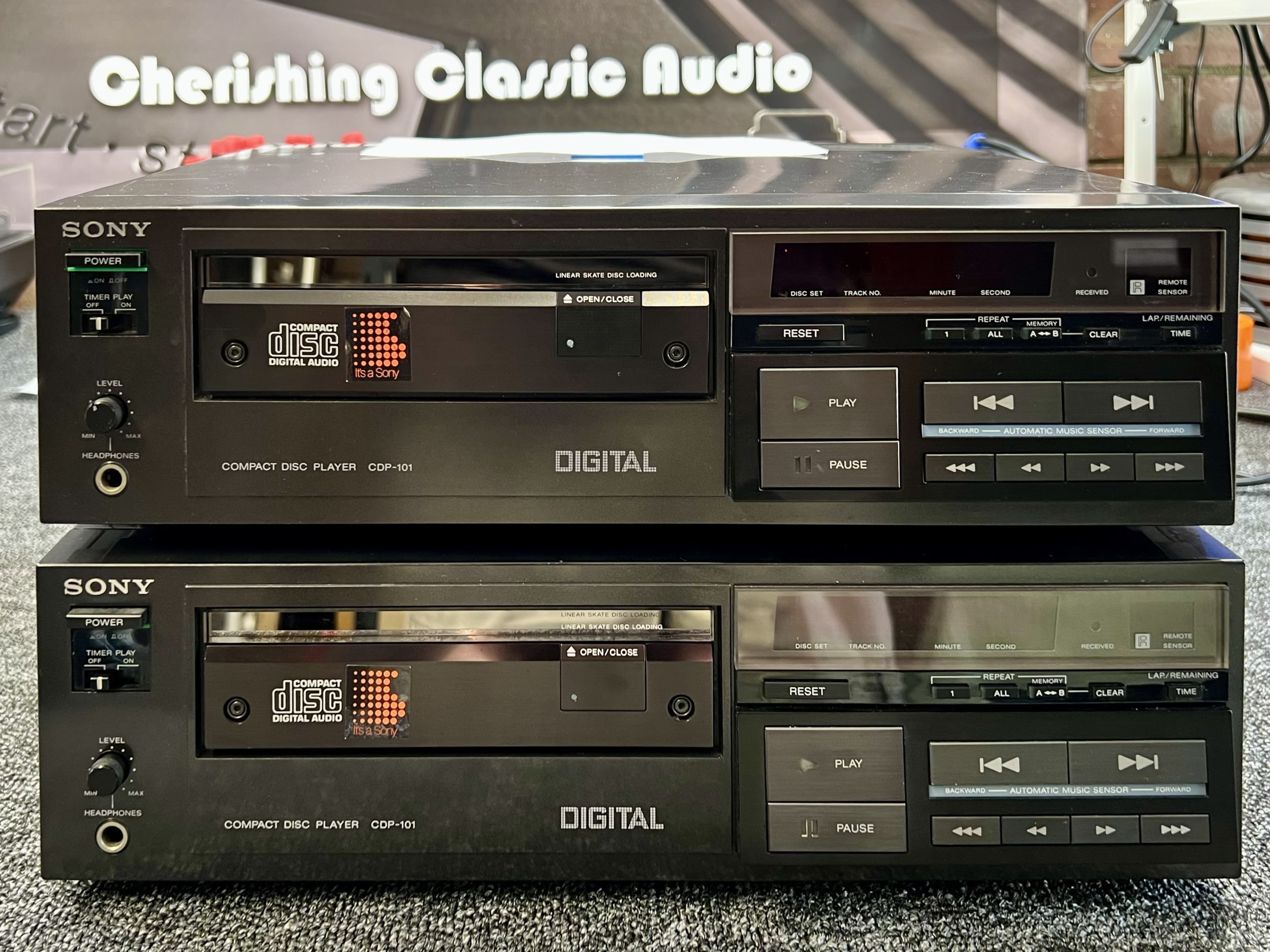
BTW, are you enjoying the more frequent content? Feel free to let me know in the comments. I’m trying to write on my “days off” (LOL) so whilst I don’t get much of a break, I am at least creating more articles. There’s a balance in there somewhere!
OG
So, there were a couple of machines in the very first wave of CD players and one of them was the Marantz CD-73 you see here, a made-in-Belgium (by Philips) machine, very similar to the also first wave Philips CD-300. Other earliest machines included the aforementioned Sony CDP-101. I encourage you to read this excellent article covering that history, by HiFi News.

The Marantz CD-73 is one of the earliest machines, dating back to 1983 and the introductory year of CD in the West. It’s amazing to me that they made equipment like this back then. These players were so overbuilt that Sony and Marantz/Philips lost money on every unit, but they were prepared to, so that folks would buy players and discs and set the market going. It worked!
This Marantz CD-73 sports its original factory mech and laser, a truly remarkable though not uncommon occurrence that says everything you need to know about how these mechs were built. Many modern players are lucky to get 3 – 5 years from a laser, that’s progress for you.
Read more about vintage vs modern CD players in this FAQ and you can read many more CD-related articles here of course, including this one about the gorgeous and even more impressive Marantz CD-84.
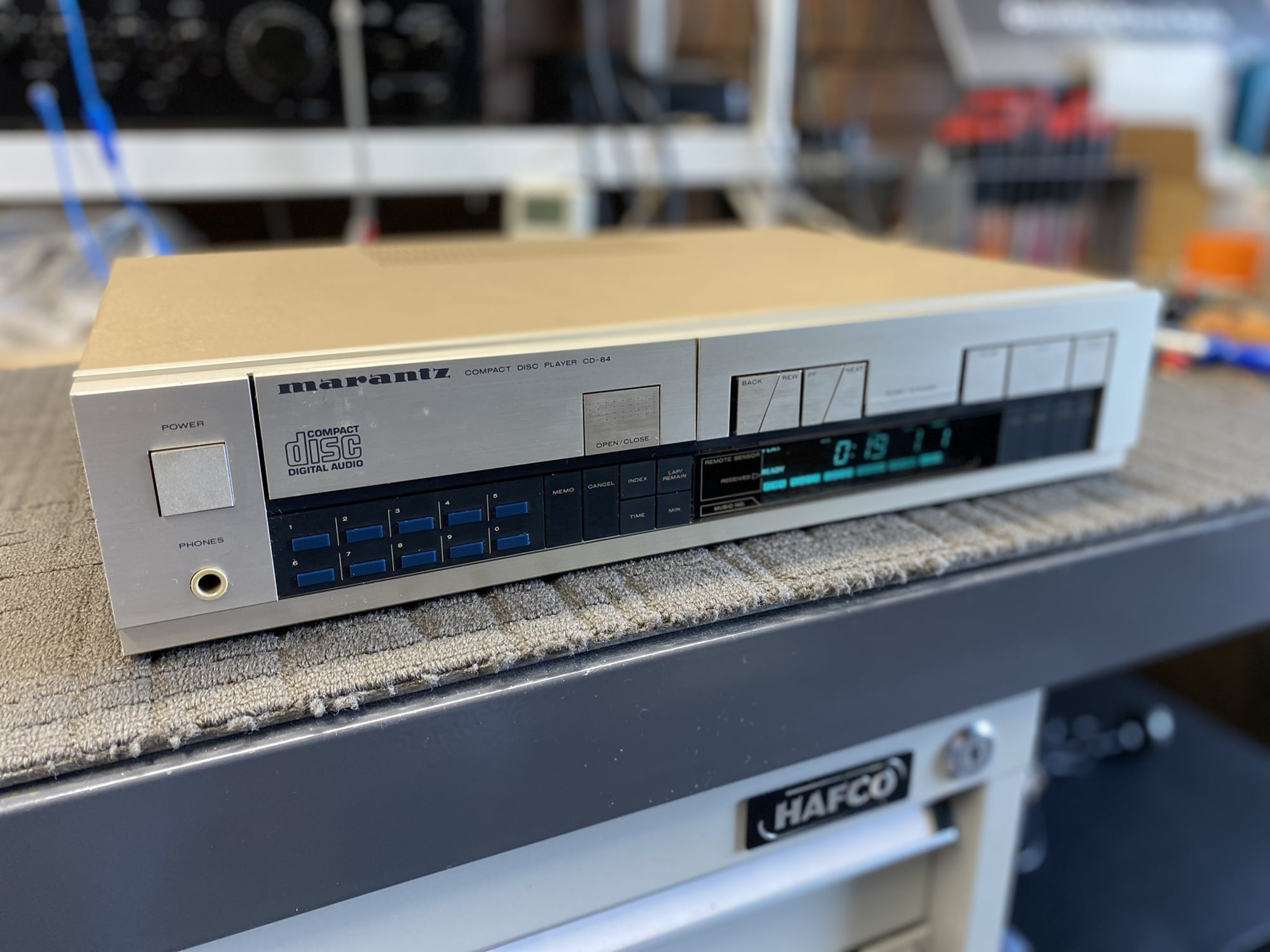
Marantz CD-73 Specifications
Courtesy of the always awesome HiFi Engine
Disc format: CD
Digital converter: 2 x TDA1540D, 16-bit linear (almost)
CD Mechanism: CDM-0 (the daddy)
Frequency response: 20Hz to 20kHz
Dynamic range: 90dB
Signal to Noise Ratio: 90dB
Channel separation: 90dB
Total harmonic distortion: 0.005%
Line output: 2V
Dimensions: 416 x 81 x 300mm
Weight: 8kg
Year: 1983 (yes!)
14 Bits…
Of note with the earliest Philips-based players is the classic TDA 1540 DAC chipset. Philips had designed this solution to meet a 14-bit standard that later, thankfully, changed into a 16-bit one before the release of CD. They were committed to the silicon and a 14-bit chip though, whereas Sony gazumped them with their 16-bit OG player.
I’ve written about bit-depth and sample frequency elsewhere, but in a nutshell, the number of bits or bit-depth describes the resolution of the recovered waveform in the amplitude domain, giving us the noise floor and dynamic range of the system, the number of steps and range of ‘loudness’ if you will. Sample frequency defines the resolution of the system in the frequency domain, determining the high-frequency cut-off point and transient response.
In both cases, the higher the better, always, because it means more original data has been captured and less has been lost. No system of sampling is perfect, all throw away data, and in 1983, 14-bit/44.1kHz was all Philips/Marantz could do. True 16-bit resolution for that group would need to wait for the Gen 2 TDA 1541 players, like my classic Meridian 207, a player I still own.
Redbook CD needs all the help it can get and 14 bits of resolution is not what people wanted, nor what is defined by the Redbook standard, so Philips ingeniously came up with a 4x oversampling scheme that aimed to ‘recover’ the lost bits by way of feedback. The TDA 1541 release soon after was a true 16-bit DAC solution, and you can certainly hear the difference. By the way, DutchAudioClassics covers this DAC topic nicely in this great article.
The “laser” and mechanical unit or ‘mech’ used here is the legendary Philips CDM-0, featuring all-metal construction and glass optics. These mechs tend to last almost forever, at least that’s what we know now, some 40 years on. They will all eventually fail of course, but the failure of these players is usually mechanical as it was here, or electronic in the form of capacitor death, not laser-related.
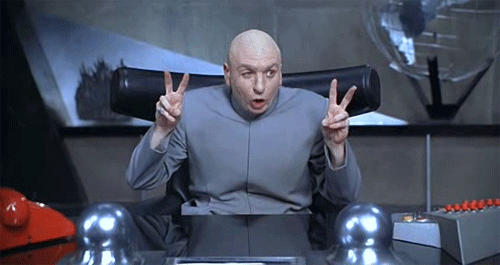
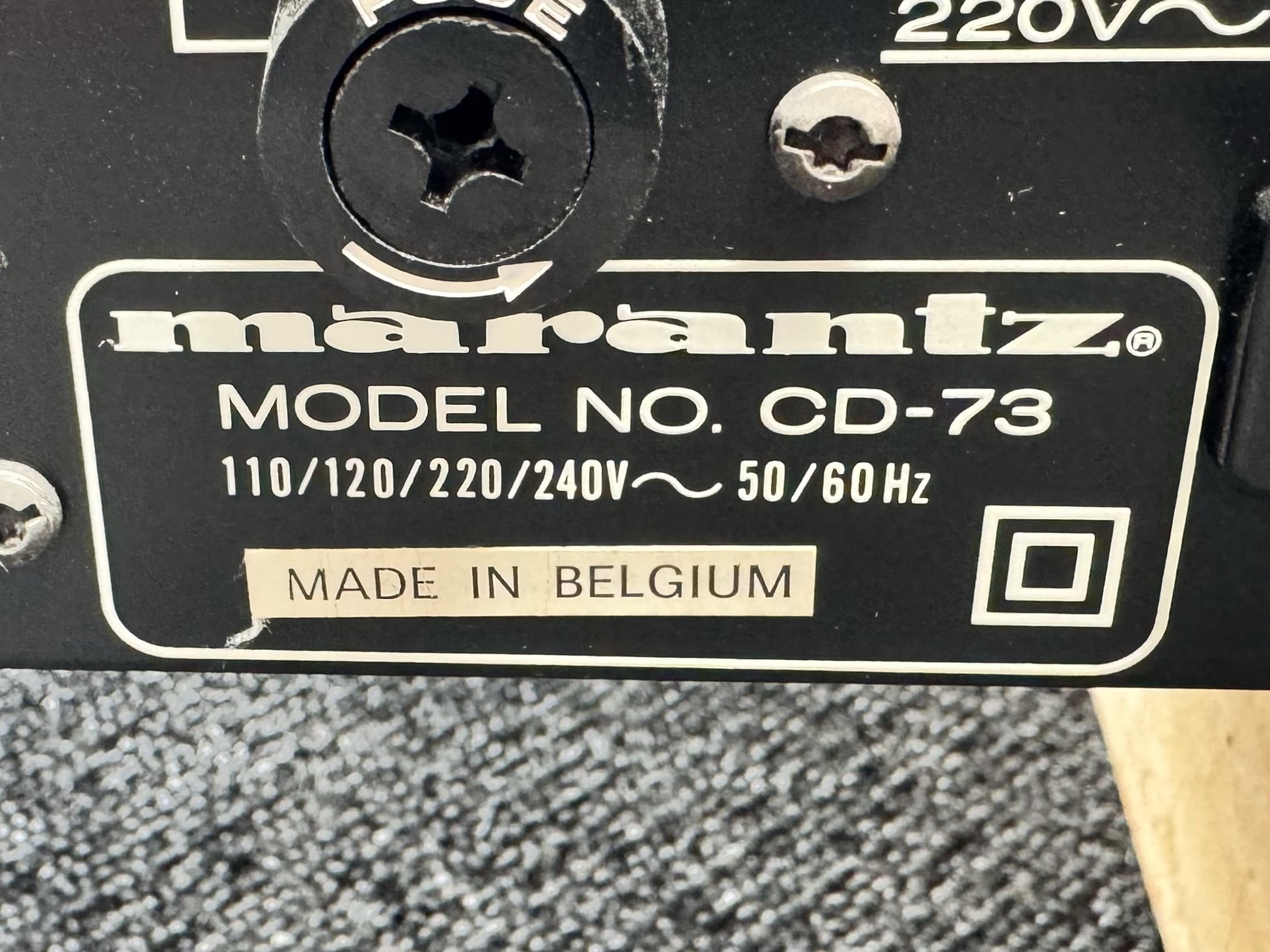
Service
So, this player came to me via a new customer, the original owner. He told me the player had been overhauled a few years ago, and multiple stickers on the outside and inside of the player confirmed this. Does anyone like or want stickers plastered all over their equipment? I’d be pissed if I took my motorcycle in for service and it came back with stickers all over it saying how great the spark plugs are, but hey, I’m grumpy and old-fashioned. Let me know your thoughts in the comments.
Anyway, this Marantz CD-73 didn’t need electronic work, but she needed a deep mechanical service. The tray wouldn’t move without a push and was sluggish when it did. Servicing a player like this means cleaning and lubricating many moving parts and attention to the loader drivetrain, particularly the drive belt and gearset. In this case, the installed belt was the wrong size and worn out anyway, and the gearset needed cleaning lubrication and a new ‘e’ clip.
Let’s go!
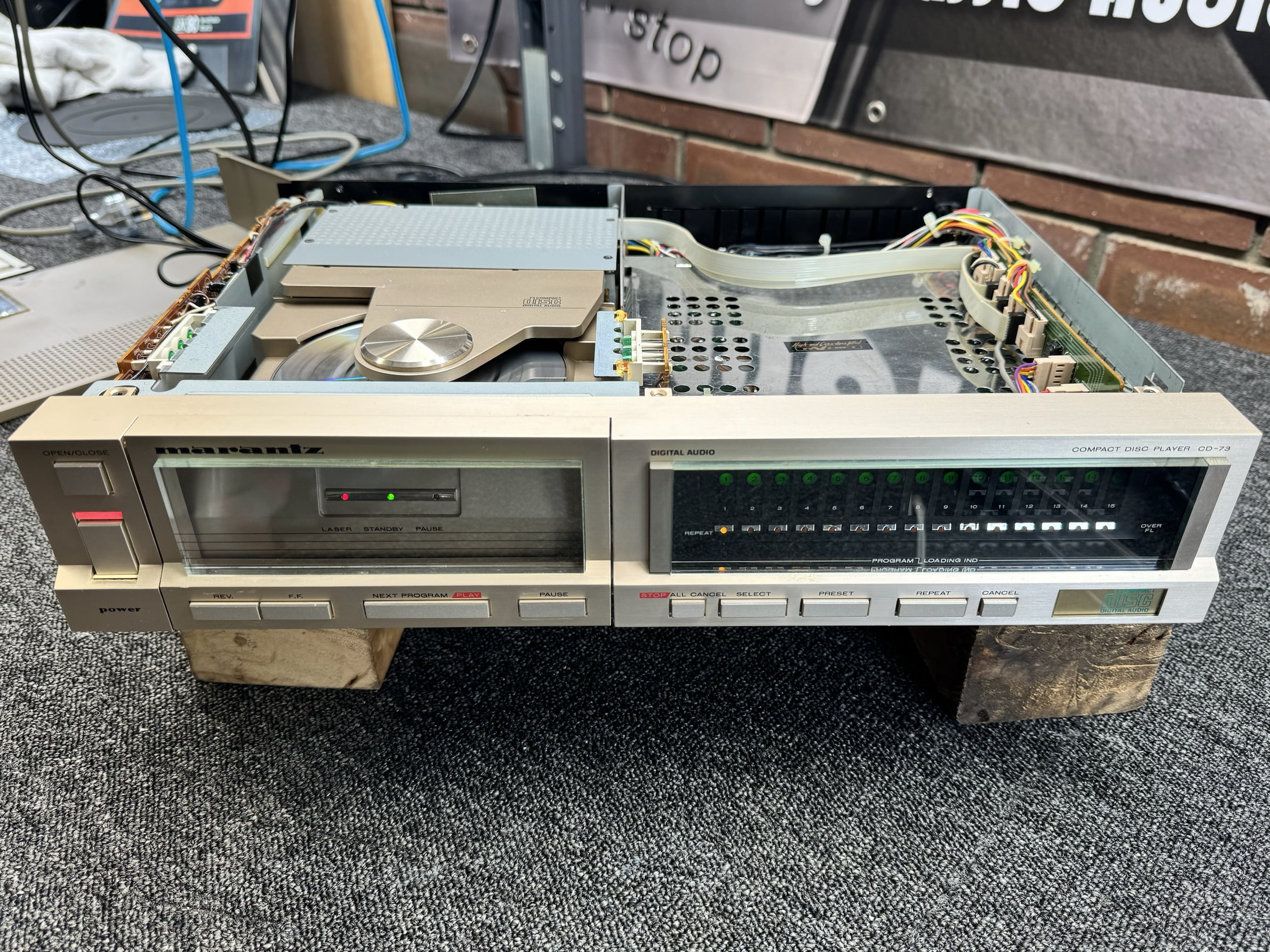
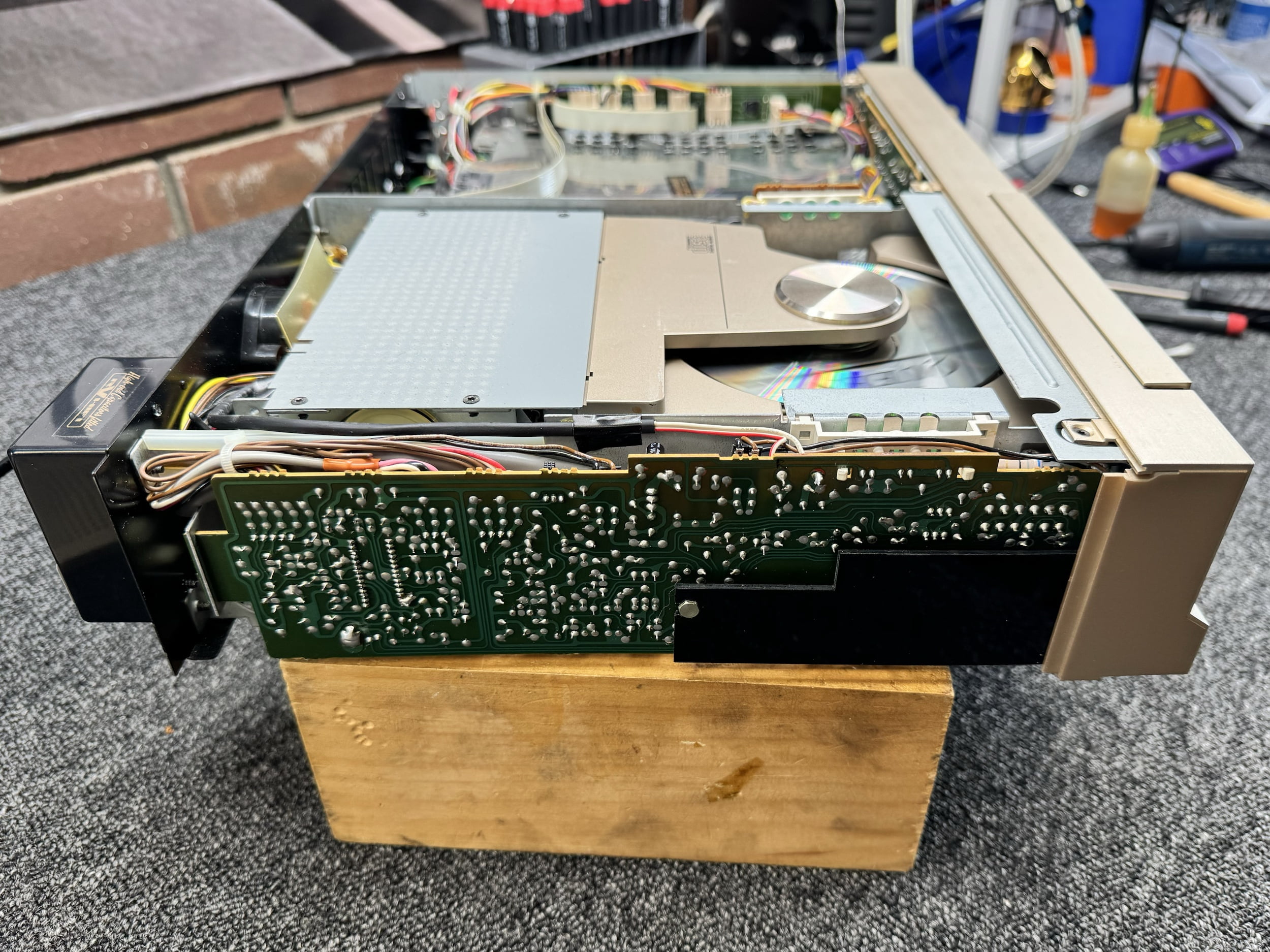

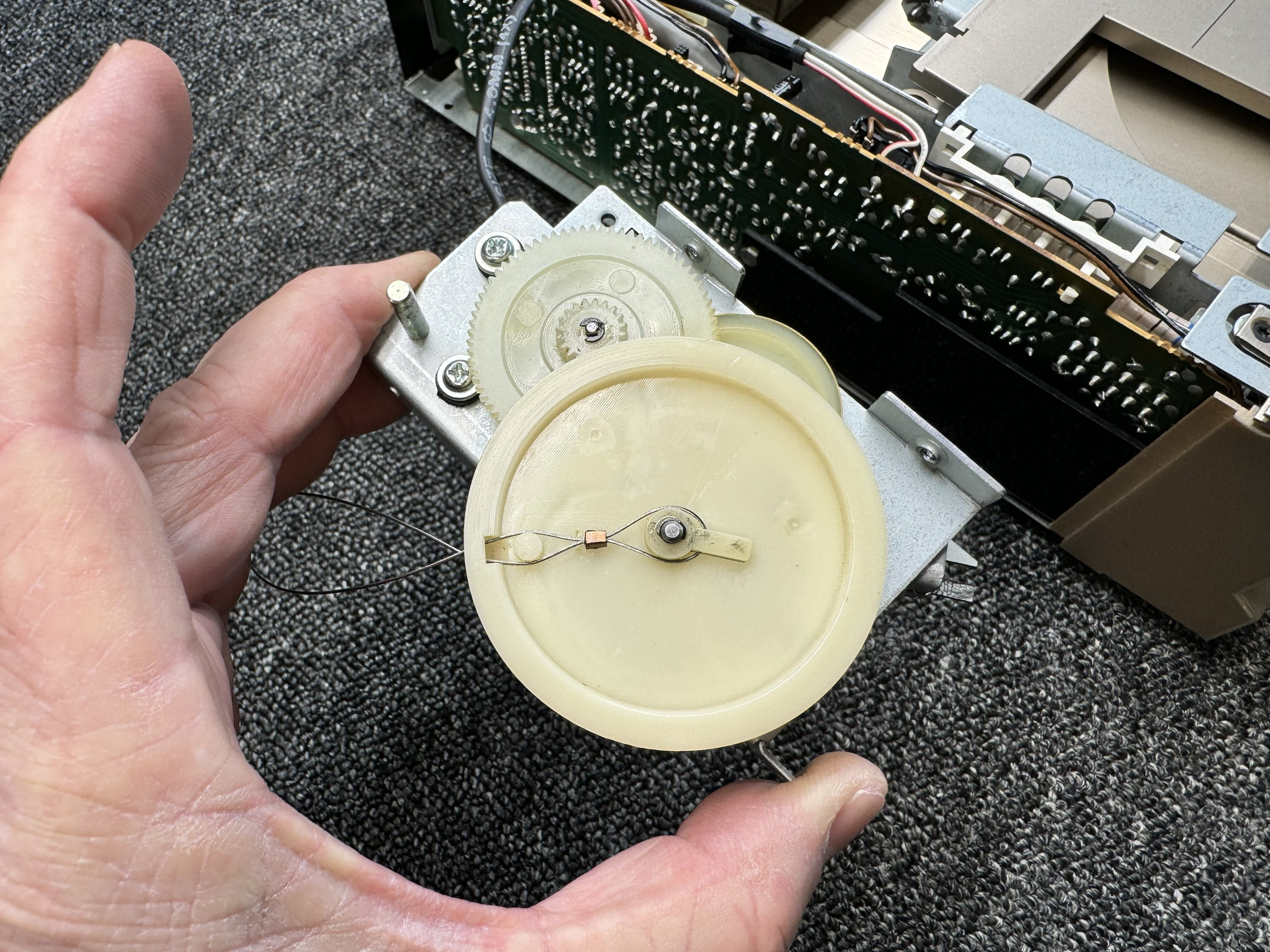
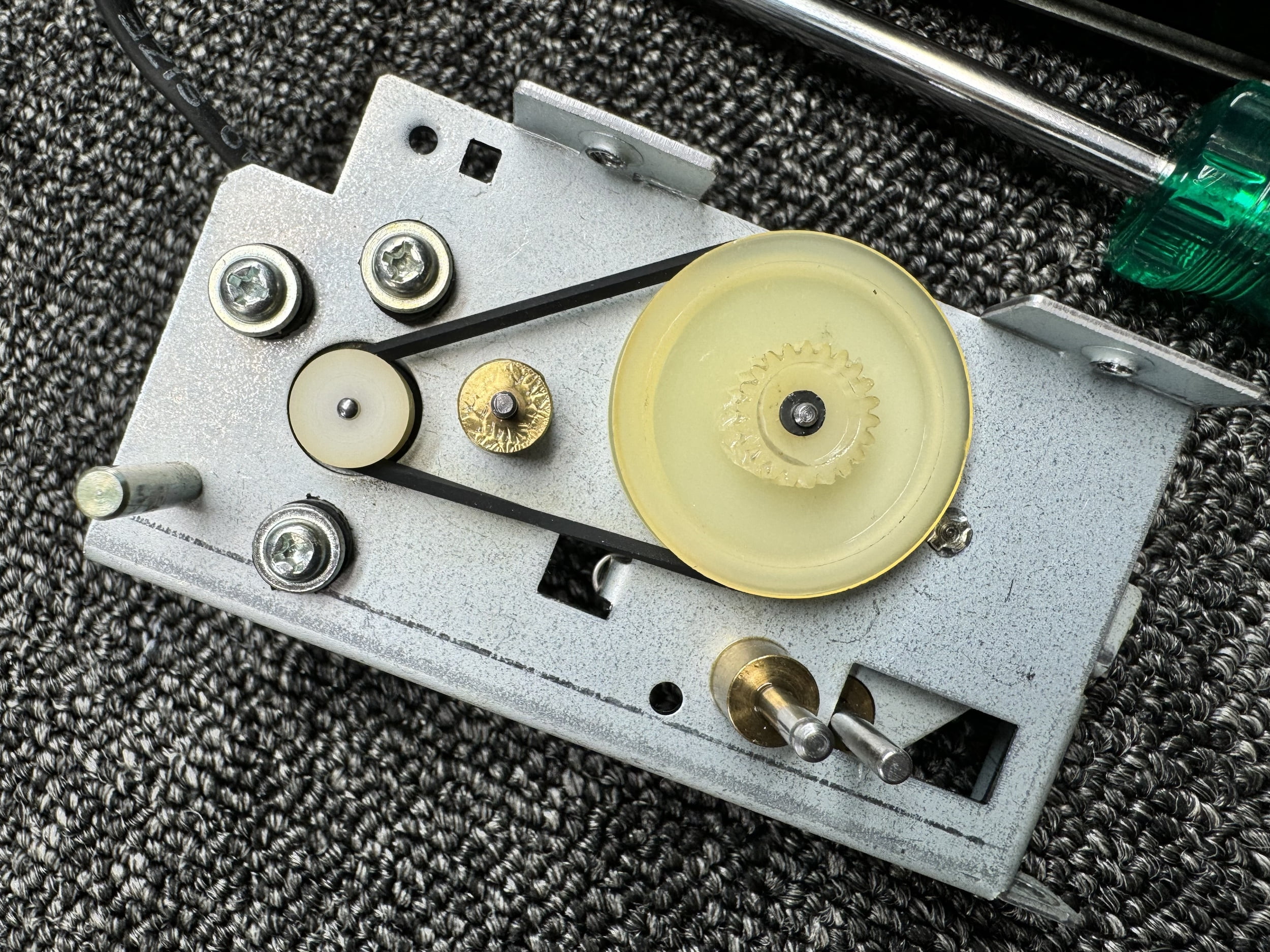
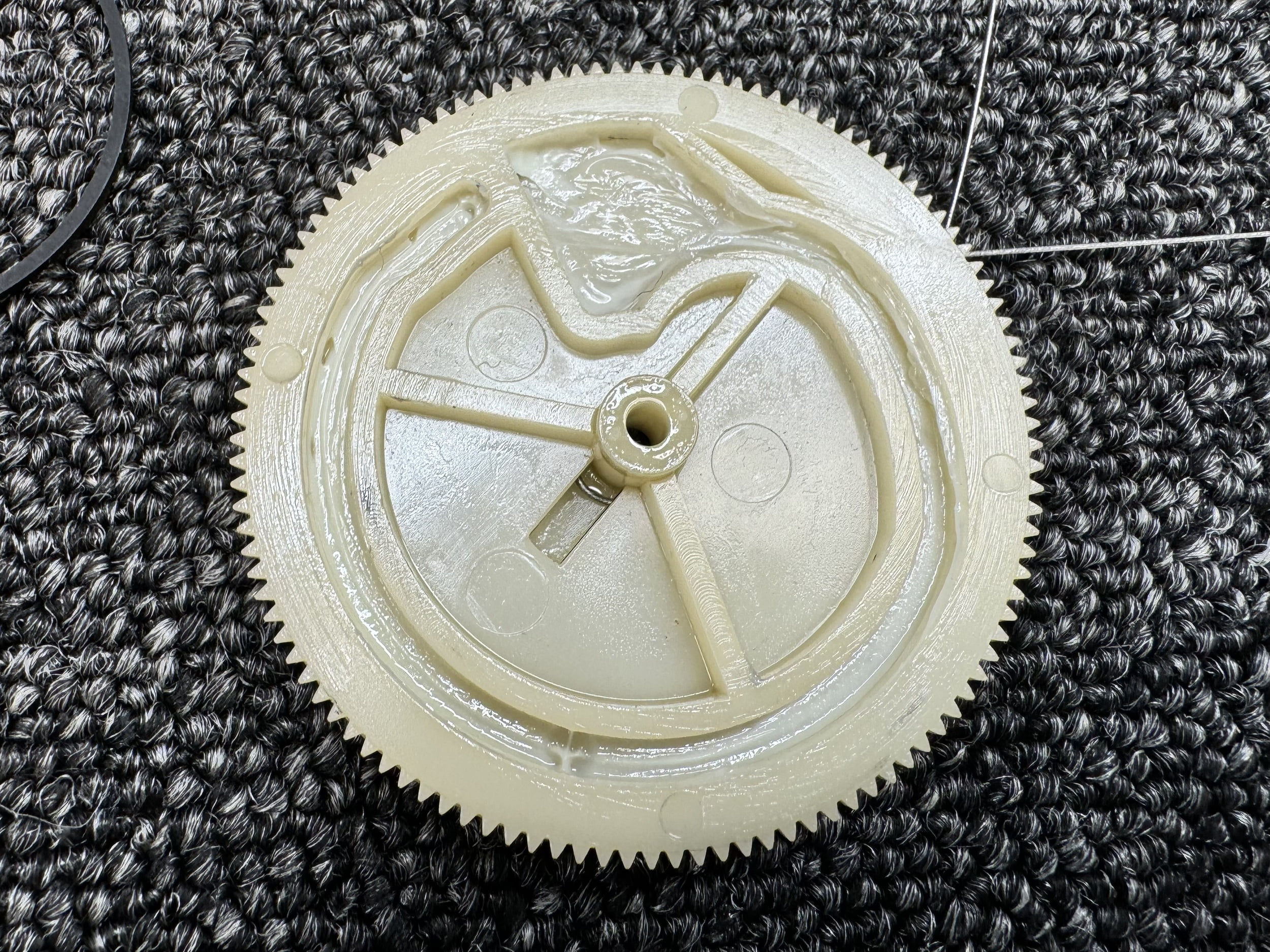
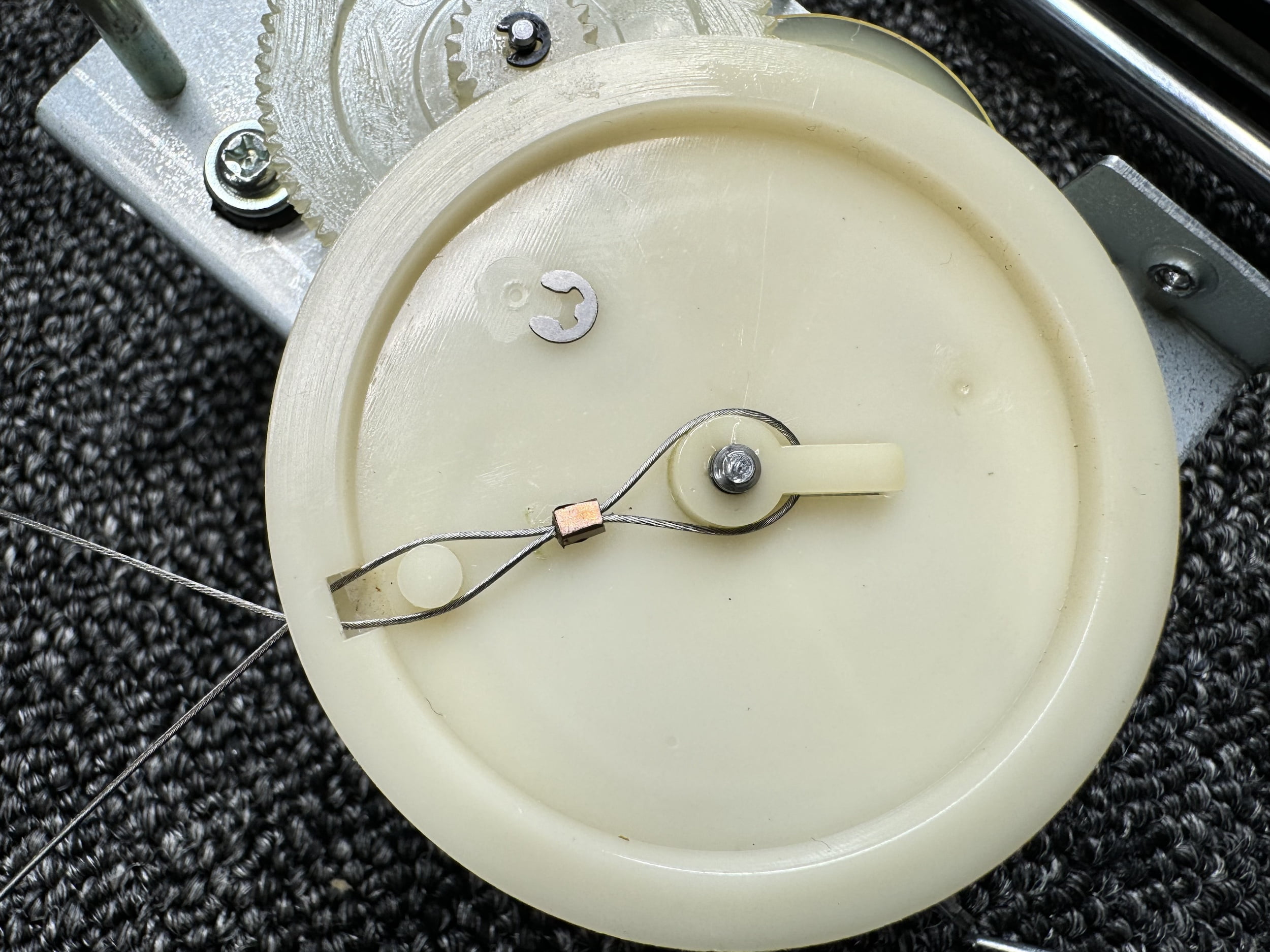
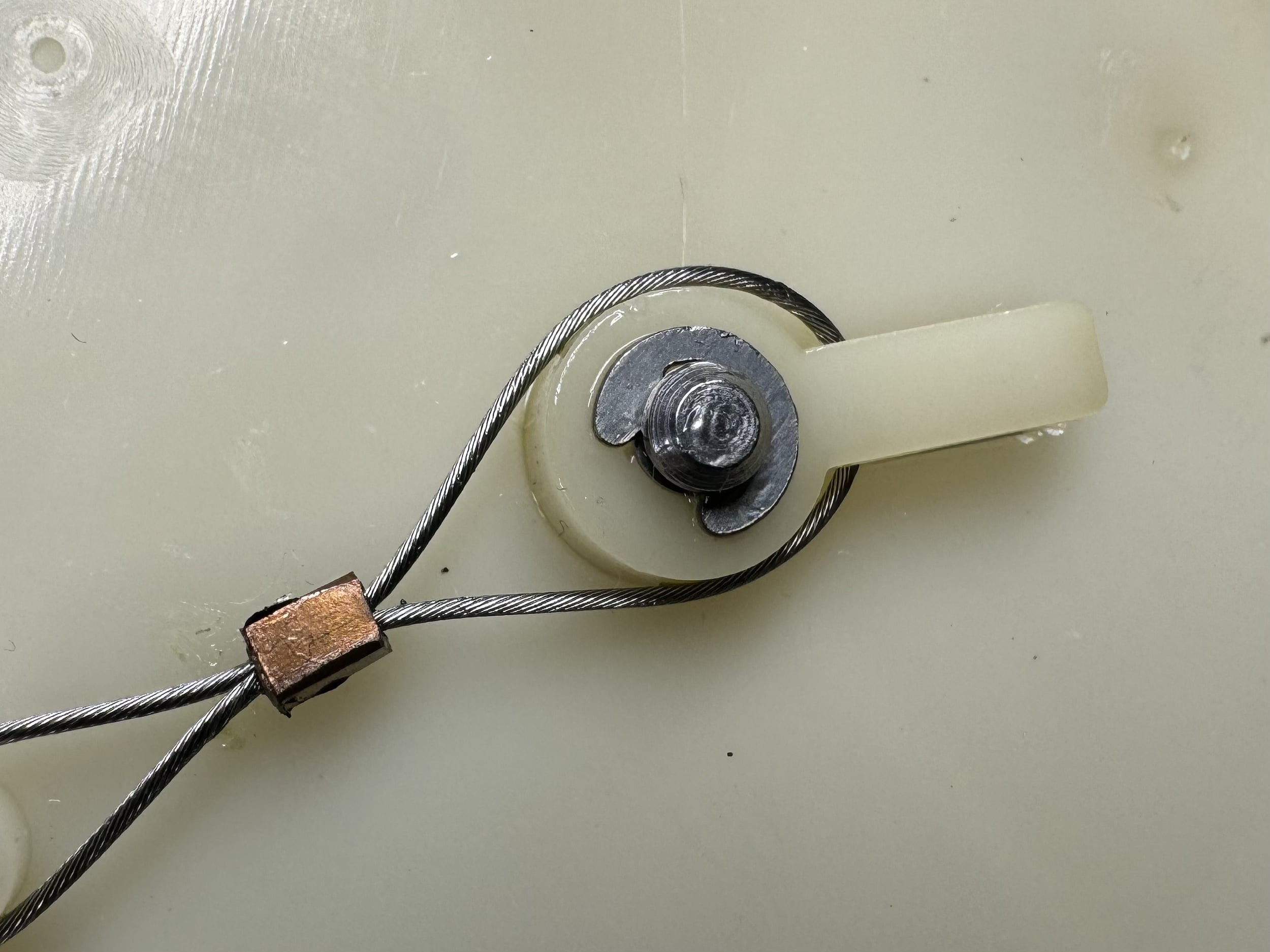
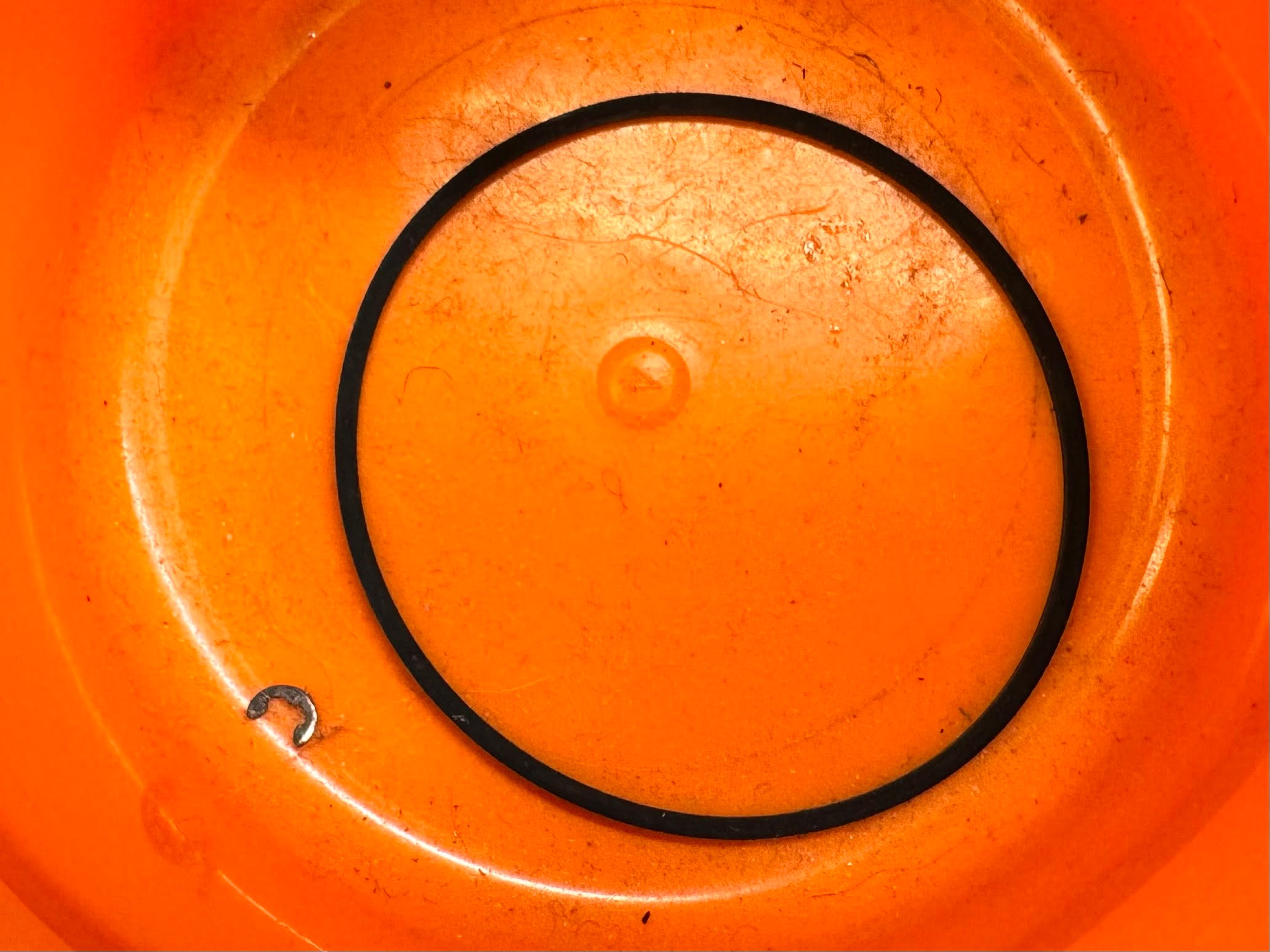
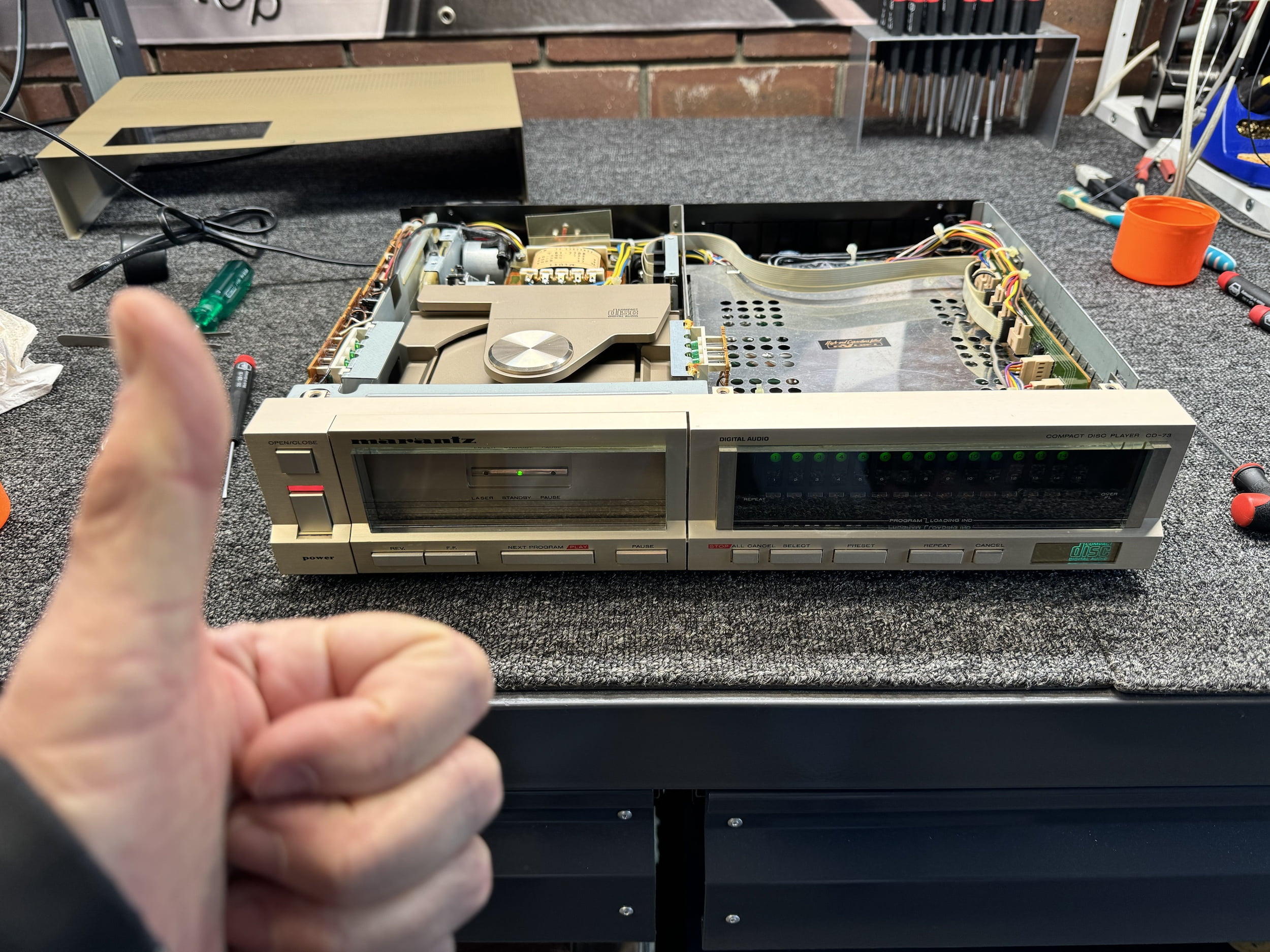
Results
After this deeper service, this Marantz CD-73 CD player loads and ejects discs as quickly and perfectly, as when she was new. She still reads discs very quickly too which is an incredible achievement for a 40+ year old CD player. Try that with a modern Marantz CD player five years after you buy it…
There is some drive train wear which I discovered as a part of the assessment I make when I look at any piece of hi-fi equipment. The first driven dear is quite worn, to be expected as it takes most of the load, but these can be replaced.
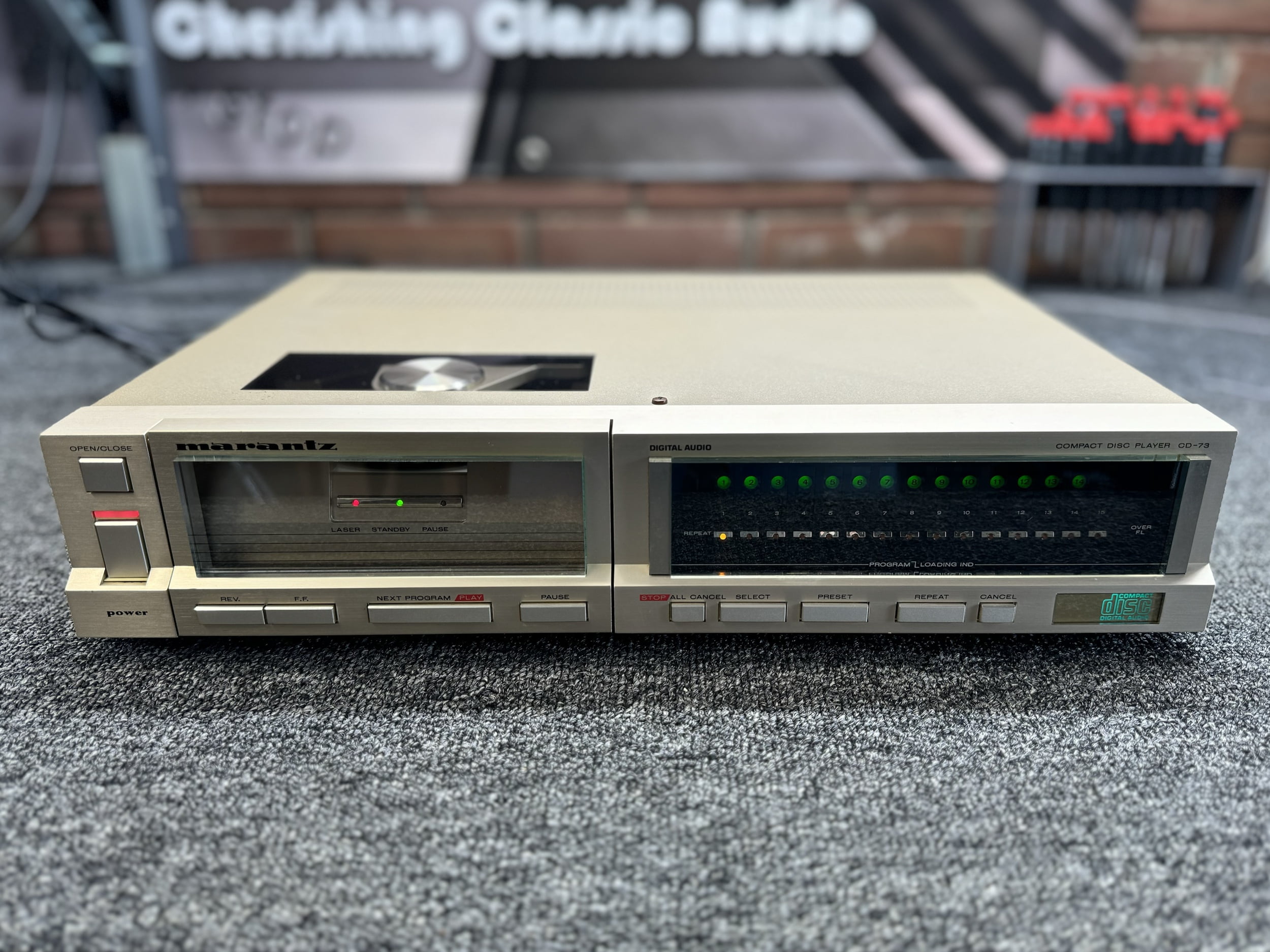
Sonically, machines like this CD-73 are quite different from modern ones. Resolution is way down on modern players and sonics take on a warm, thick and slightly coarse texture. The bass is slightly slow and woolly, the mids are a little grey and the treble is veiled and lacking detail. That said, there is a unique old-school charm to these machines and let’s not forget they are from 1983, which is certainly not the golden age of digital, so perspective is important. Who doesn’t want to play CDs on one of these though? I know I do!
Has digital sound reproduction improved since 1983? Of course, though it got worse before it got better. The first Bitstream (1-bit) players sounded worse than players like this that came before them in my opinion. They eventually figured out how to make 1-bit DAC architecture work well though and the world moved on. Has the build quality or longevity of average consumer equipment improved in that same time frame though? No, the reverse is true.
There is no mistaking a TDA-1540 or 1541 player and some folks love them, but as a high-resolution source, they can’t compete with a good modern player or even a good player from a decade later, say the early ’90s.
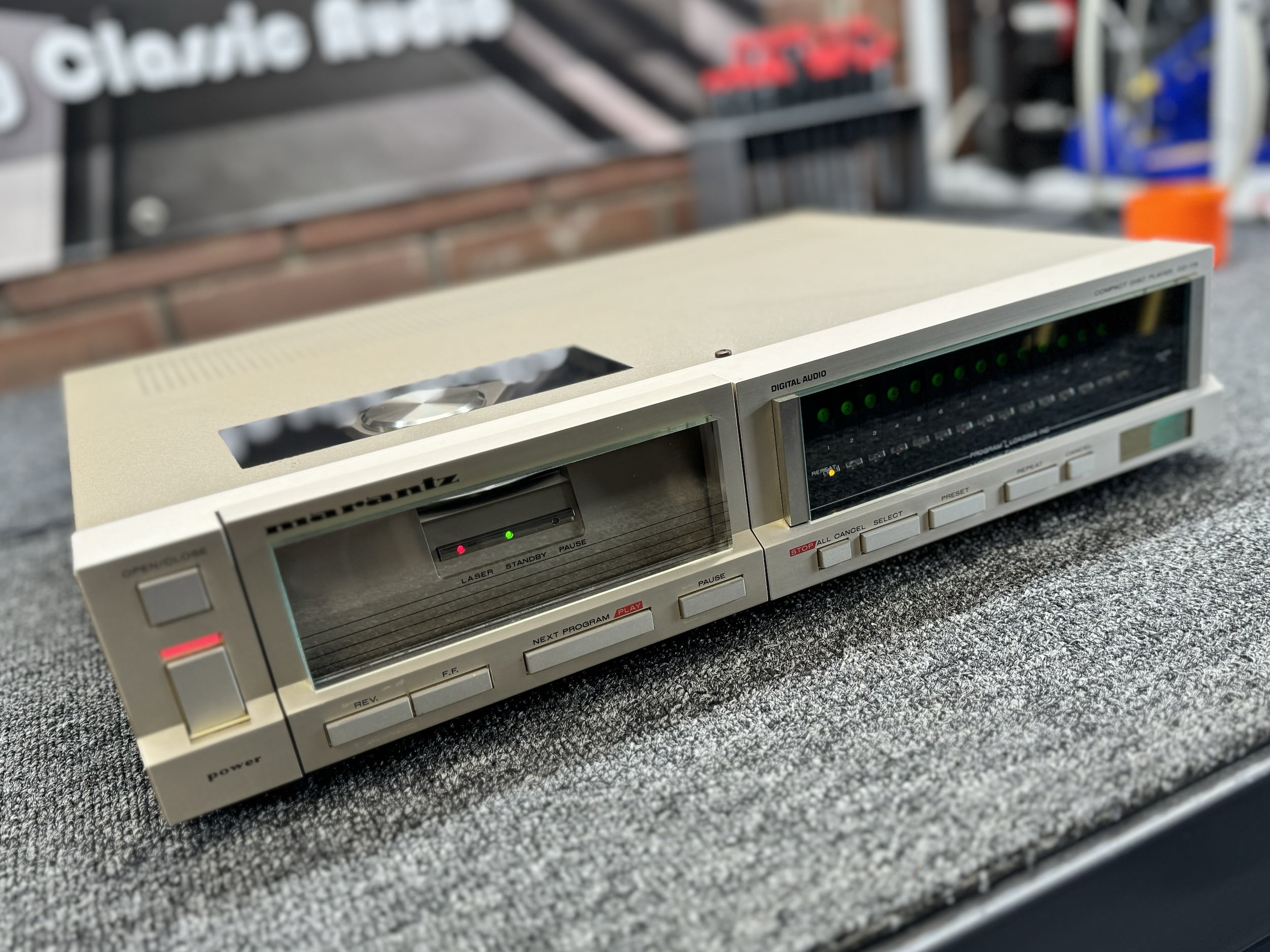
There’s an easy way around the veiled sonics of many early players of course and that is to just add a really good external DAC, something like my previous Gustard A-26 or the less capable but more affordable PS Audio NuWave DSD would do nicely. However, the Marantz CD-73, CD-84 and others, don’t have a digital out socket of any kind, so you are kind of stuck with the vintage sound these players deliver, for better or worse, unless you want to modify your player, and I don’t recommend that.
Modifying your player, Lampizator style for example might seem like a great idea, but you end up creating something that might sound better, but that is then almost worthless and a strange caricature of what it originally was, and I’m no fan of that. I like to preserve equipment, much to the chagrin of some, but the appreciation of many.
The sonic improvement a better DAC yields can profoundly improve a system, but many grow very attached to the sound of their lovely old CD-73s and CDP-101s anyway, and that’s OK, I love them too. The familiar is comforting, though I’ve always preferred to push for improvement where I can, hence my continual system evolution.
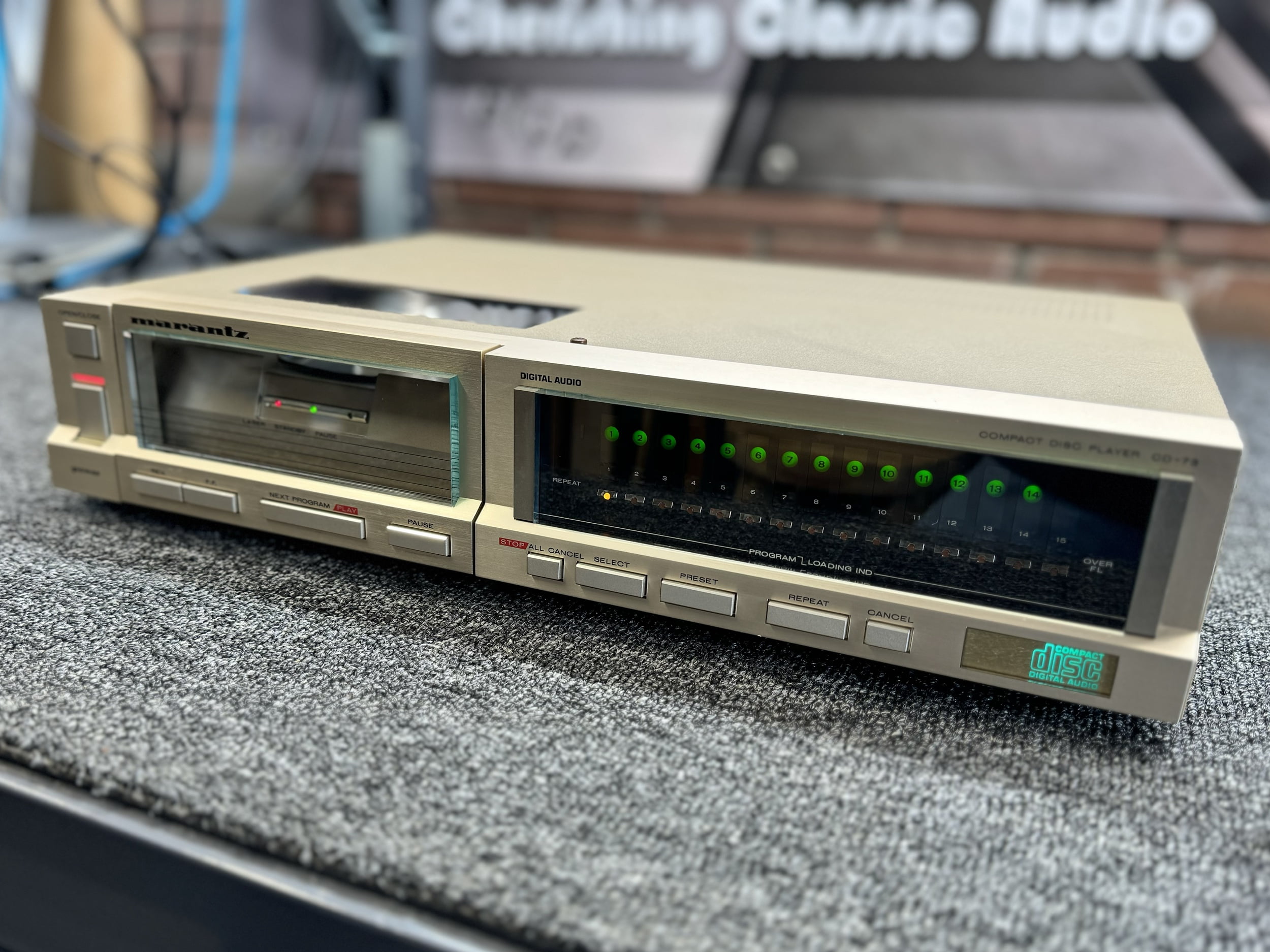
As always, thanks for visiting and taking the time to read this article, I hope you enjoyed it. If you like me to look at your Marantz CD-73 or any other Marantz or other vintage CD player for that matter, don’t hesitate to let me know.
Discover more from LiQUiD AUDiO
Subscribe to get the latest posts sent to your email.

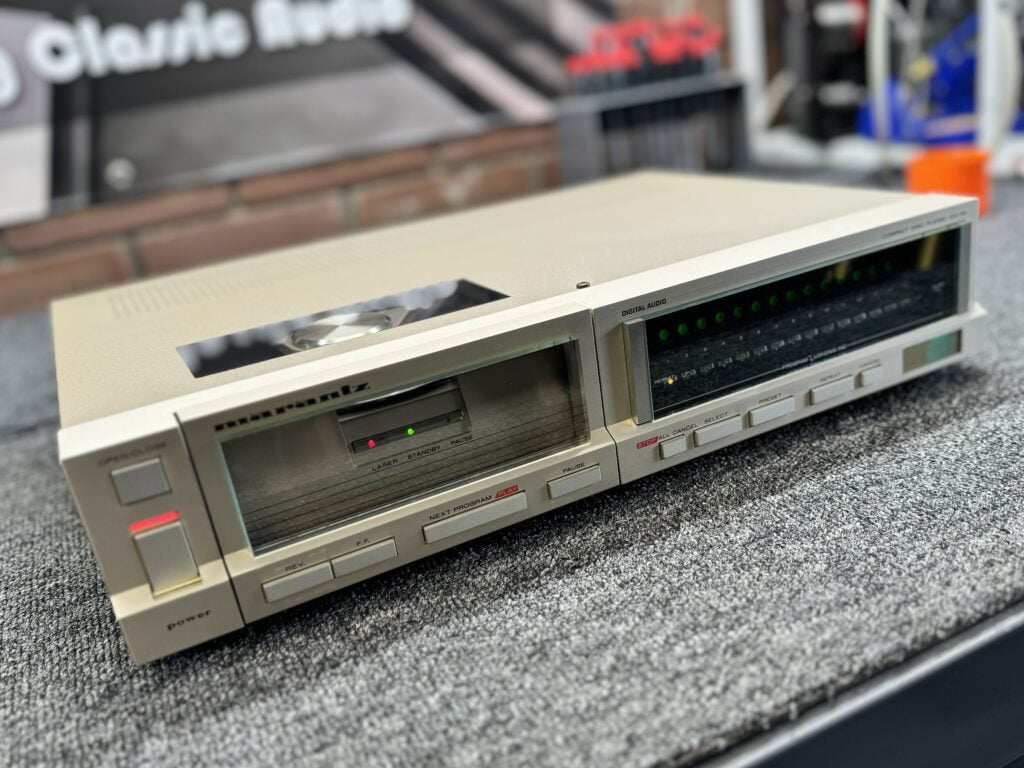

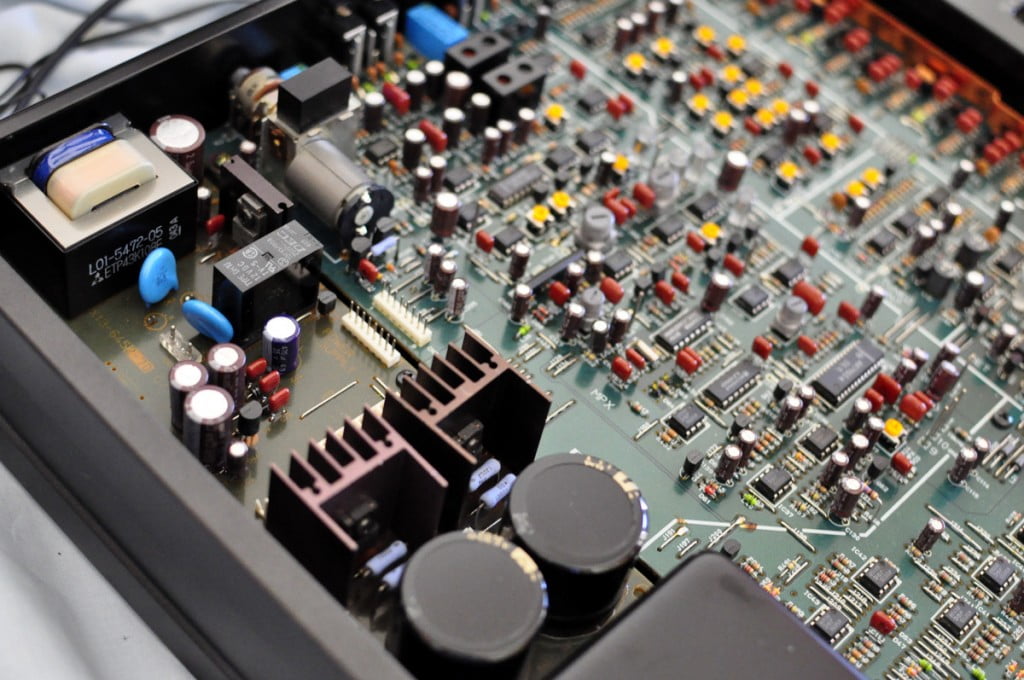
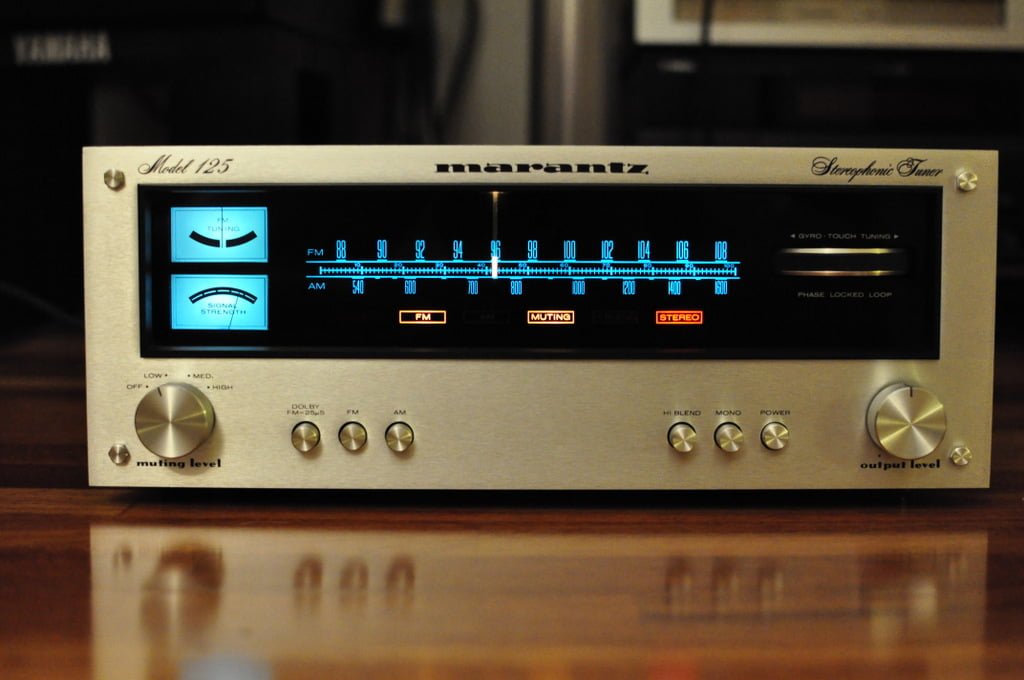
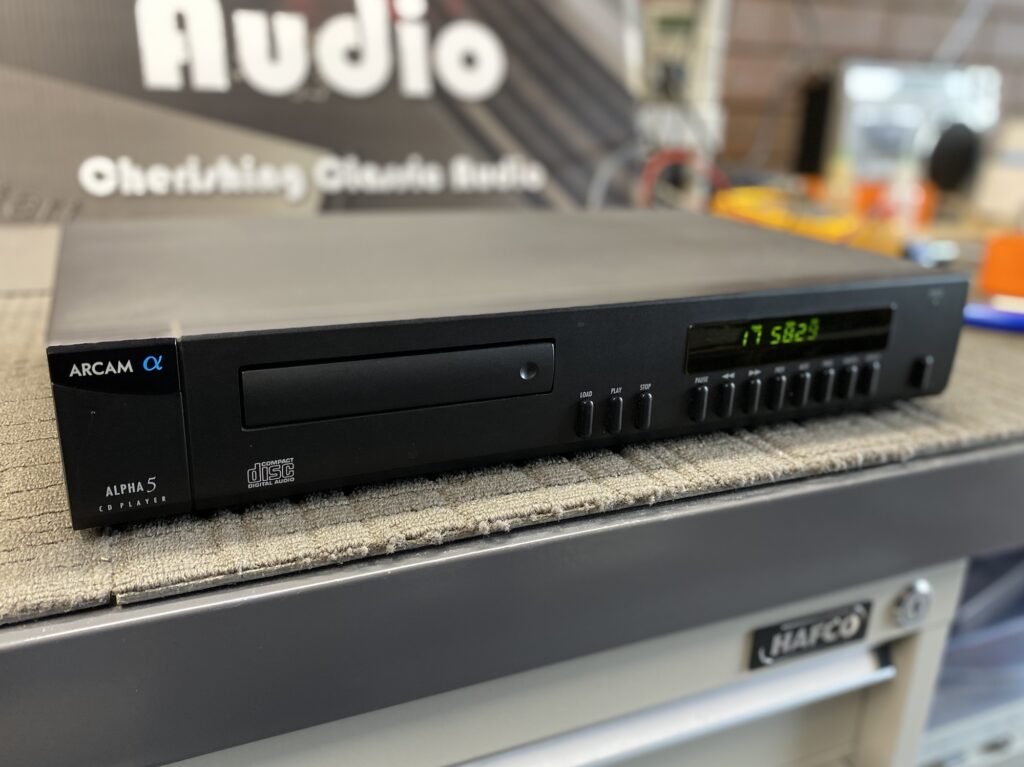
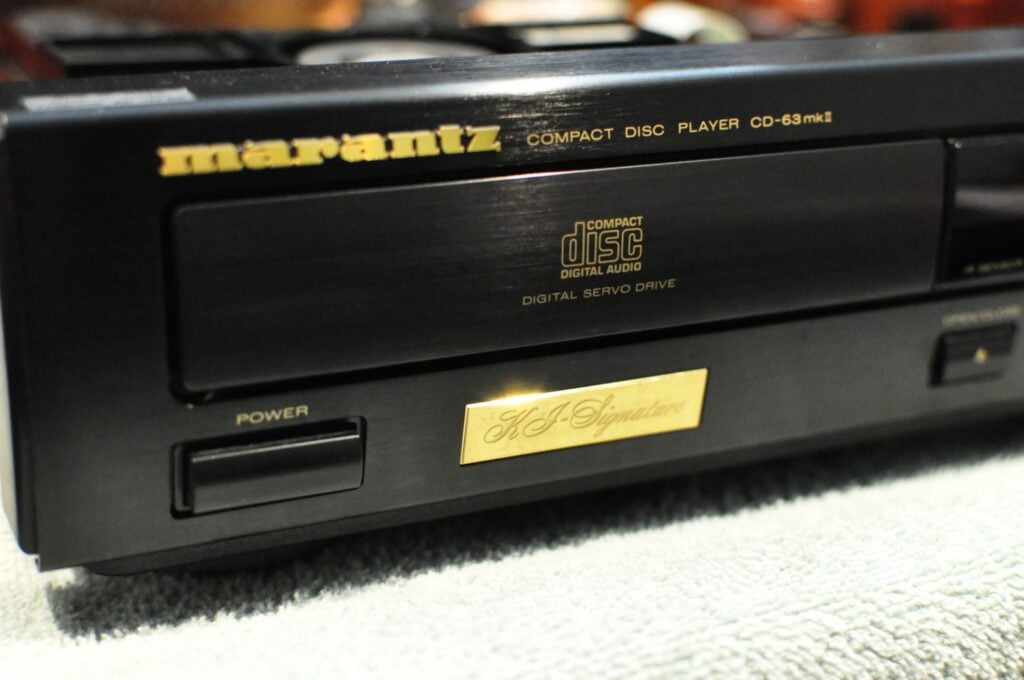
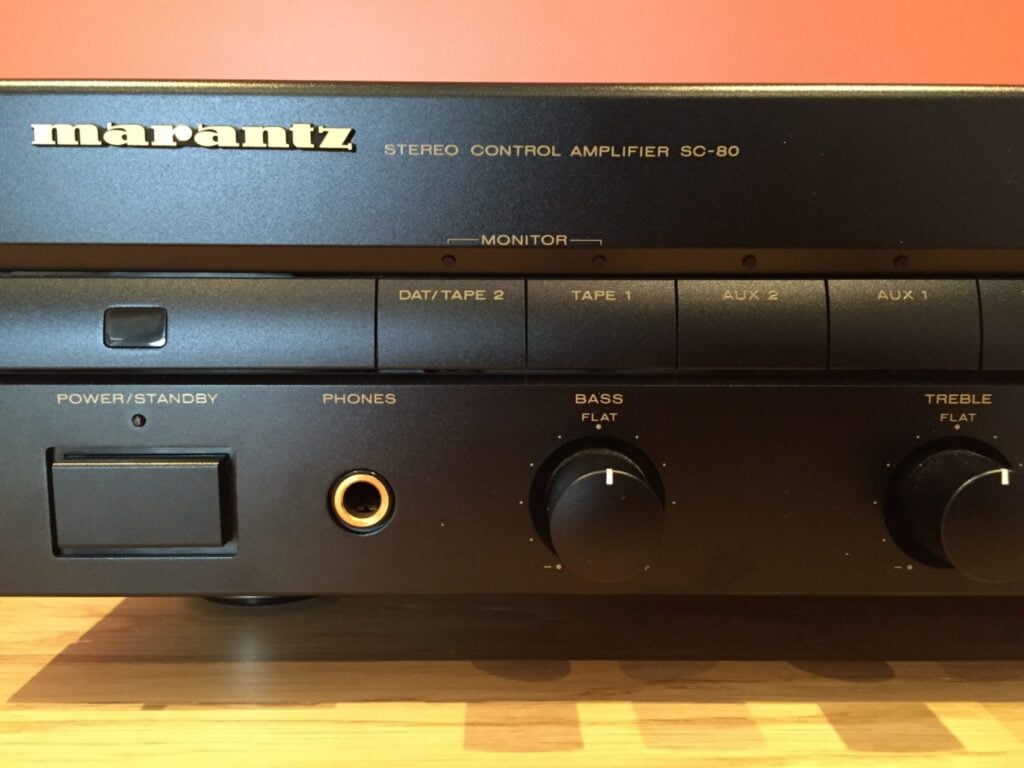
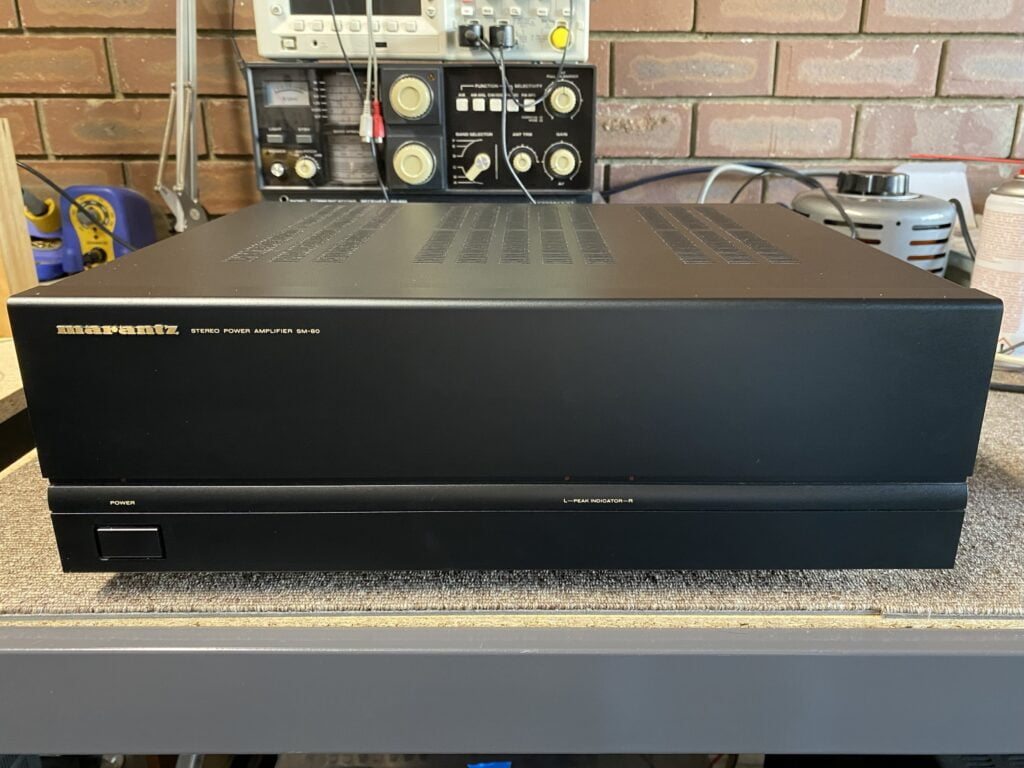
It’s great to see people cherishing their old gear and continuing to enjoy it even if it’s not up to the most recent standard. You can’t beat the look of these classic units which have been loved are cared for for 30-50 years. Love reading your stuff Mike even if its way above my head technically. Keep it up please!
Very kind of you Steve and I’m really glad you enjoy these sorts of articles. Some folks do, some don’t but most regulars seem to!
I’m looking forward to your analysis of your new Accuphase A-75. Nowadays electric usage is offset by LEDs, solar panels and EVs and the taxman can’t be too interested in electricity bills.
Luckily you have lots of free sun in WA!
Thanks Steve, I probably won’t review it for a while as there is so much other gear to come first, but yes it will be a fun one to write!
Thanks Mike!
Your articles and videos are always a must read, or watch. Appreciate your attention to detail. I only wish we had a tech like yourself in Western Canada.
Thank you, Doug, very much appreciated and glad you are enjoying the content!
Another satisfied customer getting their Marantz CD fixed. Enjoyed reading the article. My Marantz 52 going well again!
Terrific news Glen, really pleased to hear that! Lots of people enjoyed reading about your lovely CD player so thank you for bringing it to me.
Mike, absolutely love your website and YouTube channel; I’m definitely a dyed in the wool CD fanatic and I wholeheartedly agree with your sentiments regarding modern players.
My favourite gear is my Sony 557ESd and my Marantz CD-10 and CD-80 players. The Sony is on a different planet, the build quality is stunning.
I also have a modern Yamaha CD-S1000 for SACD’s. On the face of it, a big, solid player with much in common with my older gear. That is, until you scratch the surface to reveal the flimsy DVD mech lurking inside! Certainly doesn’t compare with a KSS-190 or cast aluminium CDM swing arm mech!
All the best from the UK and as always, looking forward to your new content.
Thanks for commenting Chris and you have some classic players there. The build quality of older machines is out of this world compared to what’s available now and I think many are now starting to realise this. I still have customers who look at me strangely when I tell them their 2 kg Cambridge Audio player is plastic junk though!
Yeah it’s ridiculous that you can’t even push the front panel buttons on a modern player without it sliding all over the place.
I’ve just repaired a Marantz CD-17 KI from ’98, a player comparable in price to my CD-10 and yet despite being only a few years newer, it has an entirely plastic transport & tray, no BSL motor or lovely die-cast laser mech. This one had a chipped tooth from the tray that had wedged itself in the root of one of the idler gears.
I think the only good thing about these players is the availability and price of the replacement laser assemblies, even if they are plastic tat!
Yep, this is always disappointing and the sad part for me is that people buy this stuff thinking it is “high-end” only to be disappointed when it inevitably dies after just a few years. Then I’ll see a Sony CDP-101 from 1983 that still works with a little TLC!